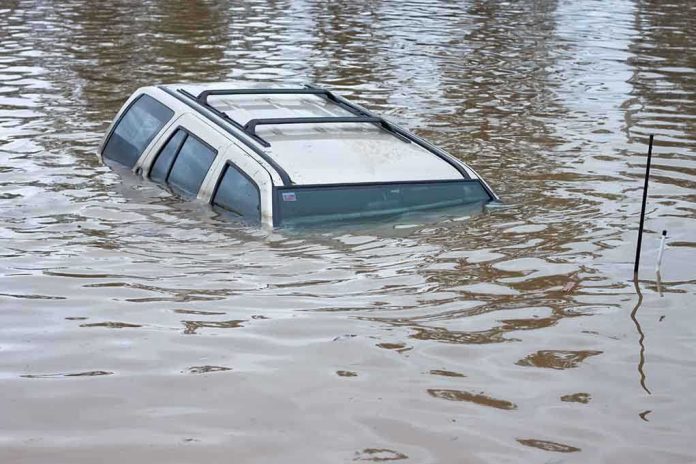
High winds and storm surge from Typhoon Halong threaten the safety and homes of western Alaska’s coastal communities.
Quick Take
- Typhoon Halong hits western Alaska with severe weather conditions.
- Isolated Alaska Native communities face significant damage.
- The Coast Guard rescues residents as homes float away.
- Concerns rise about climate impact on vulnerable regions.
Typhoon Halong’s Impact on Alaska
Typhoon Halong has made a powerful and distressing impact on the low-lying, isolated Alaska Native communities in western Alaska. With high winds and storm surge seawater, the typhoon has battered these communities, leading to a crisis as homes were swept away by the rising waters. The severe weather conditions have left residents in a precarious situation, highlighting the ongoing challenges faced by these remote areas.
High winds and storm surge seawater from Typhoon Halong battered low-lying, isolated Alaska Native communities in western Alaska. The Coast Guard plucked two dozen people from their homes after the structures floated out to sea in high water.
Rescue Operations and Community Response
Amidst the chaos, the Coast Guard has been actively involved in rescue operations, successfully evacuating two dozen individuals from their homes as the structures were carried away by the high waters. This swift action underscores the critical role of emergency services in responding to natural disasters, especially in isolated regions where resources are limited. The community’s resilience is being tested as they navigate the aftermath of this destructive storm.
The situation raises questions about the preparedness and resources available to these communities in the face of increasingly severe weather patterns. As climate change continues to affect global weather systems, vulnerable regions like western Alaska face heightened risks, necessitating greater attention and support from both government and aid organizations.
Long-term Implications and Concerns
The impact of Typhoon Halong on these communities is not only immediate but also poses long-term implications. The loss of homes and the disruption of livelihoods create significant challenges for recovery and rebuilding efforts. Moreover, the event highlights the broader issue of climate change and its disproportionate effects on marginalized and isolated populations, calling for a reevaluation of policies and support mechanisms.
As the region works towards recovery, it is imperative that strategies are developed to enhance resilience against future natural disasters. This includes infrastructure improvements, emergency preparedness plans, and sustainable development initiatives that prioritize the needs of vulnerable communities.







